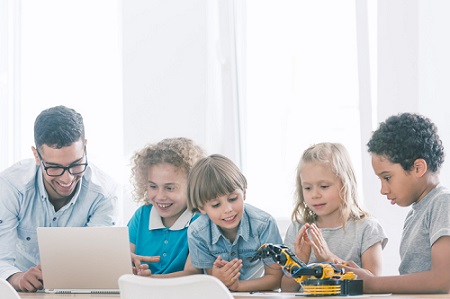
With digital adoption thriving across the K-12 education sector, how can schools ensure they are making the most out of technology that, if used correctly, can be transformational?
Some reports have called into question the role of technology in classrooms, suggesting that in some cases it can have the opposite of its intended effect of improving teaching and learning outcomes.
A paper published by the Massachusetts Institute of Technology found, for example, that students who use digital devices in class perform worse in exams. Perhaps most worrying for big tech, the researchers suggested that removing laptops and iPads from classes was the equivalent of improving the quality of teaching.
While some schools are reducing their reliance on digital devices, others are leveraging them through evidence-based methods to enhance teaching and learning outcomes.
So, how can principals make sure technology works for their school as a reliable assistant, and not against it as an unwelcome distraction?
Joanne Orlando, a senior lecturer in early childhood and education at Western Sydney University, said that when it comes to how principals approach the topic of technology with their school community, they should be mindful to focus on the positives as well as the cautionary aspects of digital devices.
Last year, Orlando discovered something peculiar while delivering a series of keynote speeches to senior education leaders around Australia. She found that many schools were allocating a large portion of their budgets to technology, but the recurrent theme of their messaging to parents about technology was markedly negative.
“The message principals were giving to parents was that technology was something inherently dangerous. Their information nights and newsletters always focused on cyber safety and other protective elements – not the benefits,” she told The Educator.
“It’s very hard for principals to get parents on board if they’re giving them these kinds of mixed messages. Safety and security is obviously important, but schools need to also focus on the value of technology and how it empowers better learning.”
This is a particularly important message for principals leading primary schools, Orlando said, adding that principals must recognise that “technology is just as important in younger year levels as it is in senior ones”.
“I find there is a tendency for just the older children to use technology, and for the better resources to go to these children,” she said.
Orlando said that, from what she has observed over the years, schools seem to be providing fewer technology-related opportunities and resources for younger children, who are more often than not entirely capable of leveraging technology to improve their learning.
“There is also a limited understanding of what a six-year-old can do on a laptop or iPad,” she said, “so I think principals should develop the technological expertise of their teachers in younger year levels and feel confident that younger children can use technology effectively.”
Related stories:
Smarter spaces for smarter learning
Educating the education system


